Growing Cucumbers Small Space can feel like a Herculean task, right? I get it! You dream of crisp, refreshing cucumbers straight from your garden, but your balcony looks more like a postage stamp than a sprawling farm. Don’t despair! This isn’t just another article; it’s your personalized guide to unlocking the secrets of compact cucumber cultivation.
For centuries, cucumbers have been a staple in diets worldwide, with evidence suggesting their cultivation dates back over 3,000 years. From ancient civilizations pickling them for preservation to modern chefs incorporating them into gourmet dishes, the cucumber’s versatility is undeniable. But what if you lack the sprawling garden of our ancestors? That’s where these DIY tricks come in.
In today’s world, space is a premium. Many of us are trading sprawling lawns for cozy apartments, but that doesn’t mean we have to sacrifice fresh, homegrown produce. This DIY guide is essential because it empowers you to overcome spatial limitations and enjoy the satisfaction of harvesting your own cucumbers. I’m going to share simple, effective techniques that will transform even the tiniest balcony or patio into a thriving cucumber oasis. Get ready to learn how growing cucumbers small space is not only possible, but incredibly rewarding!
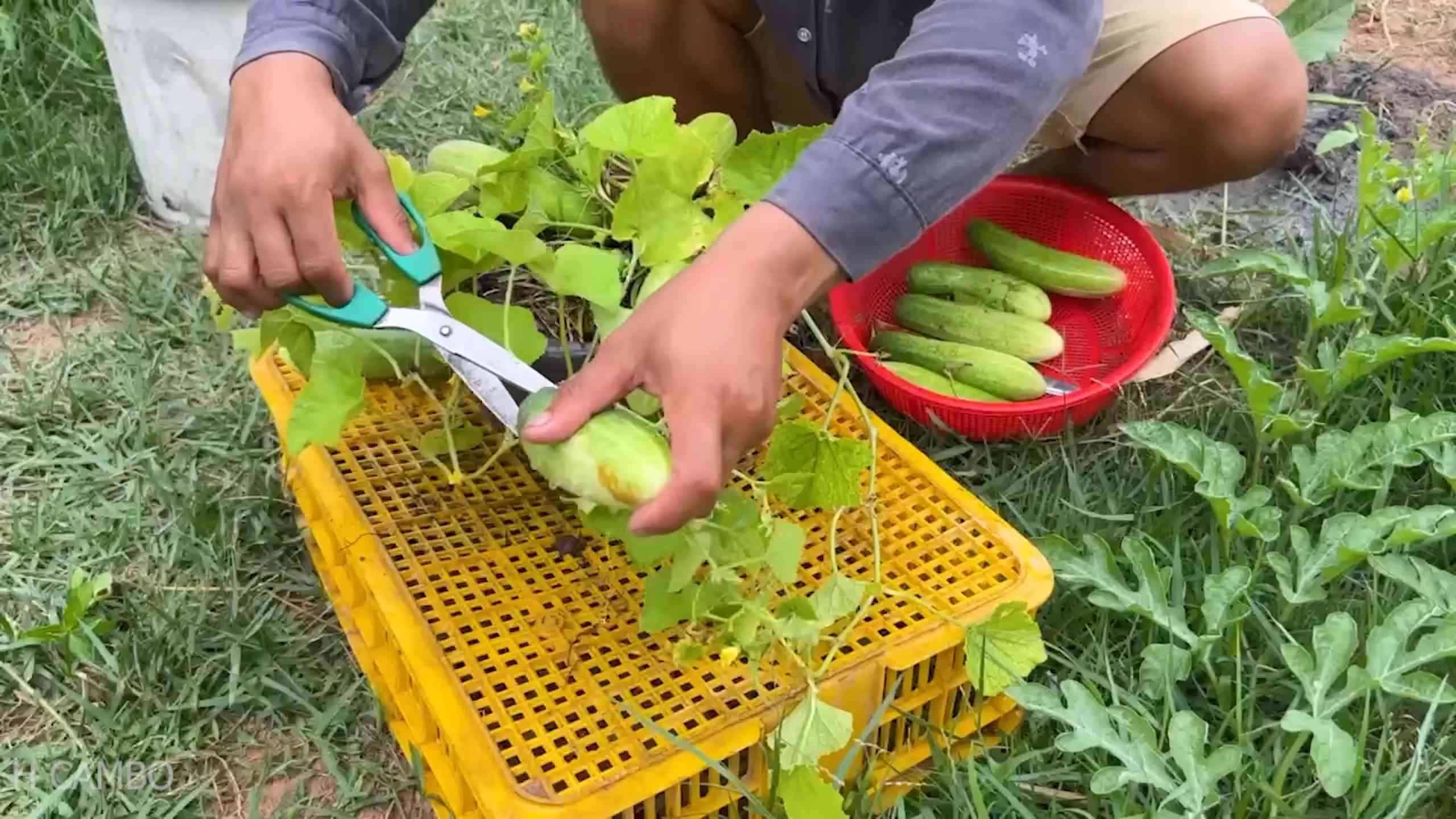
Growing Cucumbers in a Small Space: My Vertical Gardening Adventure!
Hey there, fellow gardening enthusiasts! I’m so excited to share my experience with growing cucumbers in a small space. I live in an apartment with a tiny balcony, and I thought my dreams of fresh, homegrown cucumbers were impossible. But guess what? I discovered the magic of vertical gardening, and now I’m swimming in delicious cucumbers! This guide will walk you through everything you need to know to create your own thriving cucumber oasis, even if you’re short on space.
Choosing the Right Cucumber Variety
Before we dive into the nitty-gritty, let’s talk about cucumber varieties. Not all cucumbers are created equal, especially when it comes to small-space gardening. You’ll want to choose bush or compact varieties that are specifically bred for containers. Here are a few of my favorites:
* Bush Champion: These are super productive and perfect for containers. They produce medium-sized, dark green cucumbers.
* Spacemaster: As the name suggests, these are bred for small spaces! They produce 8-inch cucumbers and are very disease-resistant.
* Patio Snacker: These are great for snacking right off the vine! They produce small, sweet cucumbers.
* Picklebush: If you love pickles, this is the variety for you! They produce small, blocky cucumbers perfect for pickling.
Materials You’ll Need
Okay, now let’s gather our supplies. Here’s what you’ll need to get started:
* Cucumber Seeds or Seedlings: Choose your favorite variety! I usually start with seeds, but seedlings will give you a head start.
* Large Container: At least 12 inches in diameter and 12 inches deep. Bigger is better! I use a 5-gallon bucket.
* Potting Mix: Use a high-quality potting mix that drains well. Avoid using garden soil, as it can compact in containers.
* Trellis or Support Structure: Cucumbers are vines, so they need something to climb on. You can use a trellis, tomato cage, or even a sturdy fence.
* Fertilizer: A balanced fertilizer (like 10-10-10) or a fertilizer specifically formulated for vegetables.
* Watering Can or Hose: For keeping your cucumbers hydrated.
* Gardening Gloves: To protect your hands.
* Optional: Mulch (like straw or wood chips) to help retain moisture and suppress weeds.
Step-by-Step Planting Guide
Alright, let’s get our hands dirty! Here’s how to plant your cucumbers:
1. Prepare Your Container: Make sure your container has drainage holes. If not, drill some! Fill the container with potting mix, leaving about an inch or two of space at the top.
2. Plant Your Seeds or Seedlings:
* From Seeds: Sow seeds about 1 inch deep and 2-3 inches apart. Water gently.
* From Seedlings: Gently remove the seedling from its container. Loosen the roots slightly. Dig a hole in the potting mix large enough to accommodate the root ball. Place the seedling in the hole and backfill with potting mix. Water thoroughly.
3. Install Your Trellis or Support: Place your trellis or support structure in the container behind the cucumber plant. Make sure it’s sturdy enough to support the weight of the mature vine.
4. Water Thoroughly: Water your newly planted cucumbers deeply. The soil should be moist but not soggy.
5. Mulch (Optional): Add a layer of mulch around the base of the plant to help retain moisture and suppress weeds.
Caring for Your Cucumber Plants
Now that your cucumbers are planted, it’s time to give them some TLC! Here’s what you need to do to keep them happy and healthy:
1. Watering: Cucumbers need consistent moisture, especially when they’re fruiting. Water deeply whenever the top inch of soil feels dry to the touch. Avoid overhead watering, as this can lead to fungal diseases. I prefer to water at the base of the plant.
2. Fertilizing: Feed your cucumbers every 2-3 weeks with a balanced fertilizer or a fertilizer specifically formulated for vegetables. Follow the instructions on the fertilizer package.
3. Training the Vines: As your cucumber vines grow, gently guide them onto the trellis or support structure. You can use plant ties or clips to secure them.
4. Pruning: Pruning isn’t always necessary, but it can help improve air circulation and encourage fruit production. Remove any yellowing or dead leaves. You can also pinch off the tips of the vines to encourage branching.
5. Pest and Disease Control: Keep an eye out for pests like aphids, cucumber beetles, and squash bugs. You can control these pests with insecticidal soap or neem oil. Also, watch out for fungal diseases like powdery mildew. Improve air circulation and avoid overhead watering to prevent these diseases. If you see signs of disease, treat with a fungicide.
6. Pollination: Cucumbers need to be pollinated to produce fruit. If you’re growing your cucumbers indoors or in an area with limited bee activity, you may need to hand-pollinate them. To hand-pollinate, use a small paintbrush to transfer pollen from the male flowers to the female flowers. Female flowers have a small cucumber behind the flower, while male flowers do not.
Harvesting Your Cucumbers
The best part of growing cucumbers is, of course, harvesting them! Here’s what you need to know:
1. Harvest Time: Cucumbers are usually ready to harvest about 50-70 days after planting. The exact time will depend on the variety.
2. How to Harvest: Harvest your cucumbers when they’re the desired size and color. Use a sharp knife or pruning shears to cut the cucumber from the vine. Be careful not to damage the vine.
3. Regular Harvesting: Harvest your cucumbers regularly to encourage continued fruit production. Overripe cucumbers can become bitter and will slow down the production of new fruit.
Troubleshooting Common Cucumber Problems
Even with the best care, you might encounter some problems along the way. Here are a few common cucumber problems and how to fix them:
* Yellowing Leaves: This can be caused by overwatering, underwatering, nutrient deficiencies, or pests. Check the soil moisture and adjust your watering accordingly. Fertilize your plants regularly. Inspect for pests and treat as needed.
* Bitter Cucumbers: This can be caused by inconsistent watering, high temperatures, or stress. Water your plants consistently and provide shade during the hottest part of the day.
* Lack of Fruit: This can be caused by poor pollination, nutrient deficiencies, or pests. Hand-pollinate your cucumbers if necessary. Fertilize your plants regularly. Inspect for pests and treat as needed.
* Powdery Mildew: This is a fungal disease that causes a white, powdery coating on the leaves. Improve air circulation and avoid overhead watering to prevent powdery mildew. Treat with a fungicide if necessary.
My Personal Tips and Tricks
Over the years, I’ve learned a few extra tips and tricks that have helped me grow even more cucumbers in my small space:
* Succession Planting: Plant new cucumber seeds or seedlings every few weeks to extend your harvest season.
* Companion Planting: Plant cucumbers with companion plants like marigolds, nasturtiums, and basil to deter pests and attract pollinators.
* Vertical Gardening Systems: Experiment with different vertical gardening systems to maximize your space. I’ve used trellises, hanging baskets, and even repurposed pallets.
* Homemade Fertilizer: I sometimes use homemade fertilizer like compost tea or diluted fish emulsion to give my cucumbers a boost.
* Observation is Key: Pay close attention to your cucumber plants and learn to recognize the signs of stress or disease. The sooner you catch a problem, the easier it will be to fix.
Enjoying Your Homegrown Cucumbers
Now that you’ve harvested your delicious homegrown cucumbers, it’s time to enjoy them! Here are a few of my favorite ways to use them:
* Salads: Add sliced cucumbers to your favorite salads for a refreshing crunch.
* Sandwiches: Use cucumber slices as a topping for sandwiches and wraps.
* Pickles: Make your own homemade pickles!
* Cucumber Water: Infuse water with cucumber slices for a refreshing and hydrating drink.
* Gazpacho: Use cucumbers as a base for a cold and refreshing gazpacho soup.
* Snacks: Simply slice and eat them as a healthy and delicious snack!
Growing cucumbers in a small space might seem challenging, but with a little planning and effort, it’s totally achievable. I hope this guide has inspired you to give it a try. Happy gardening!
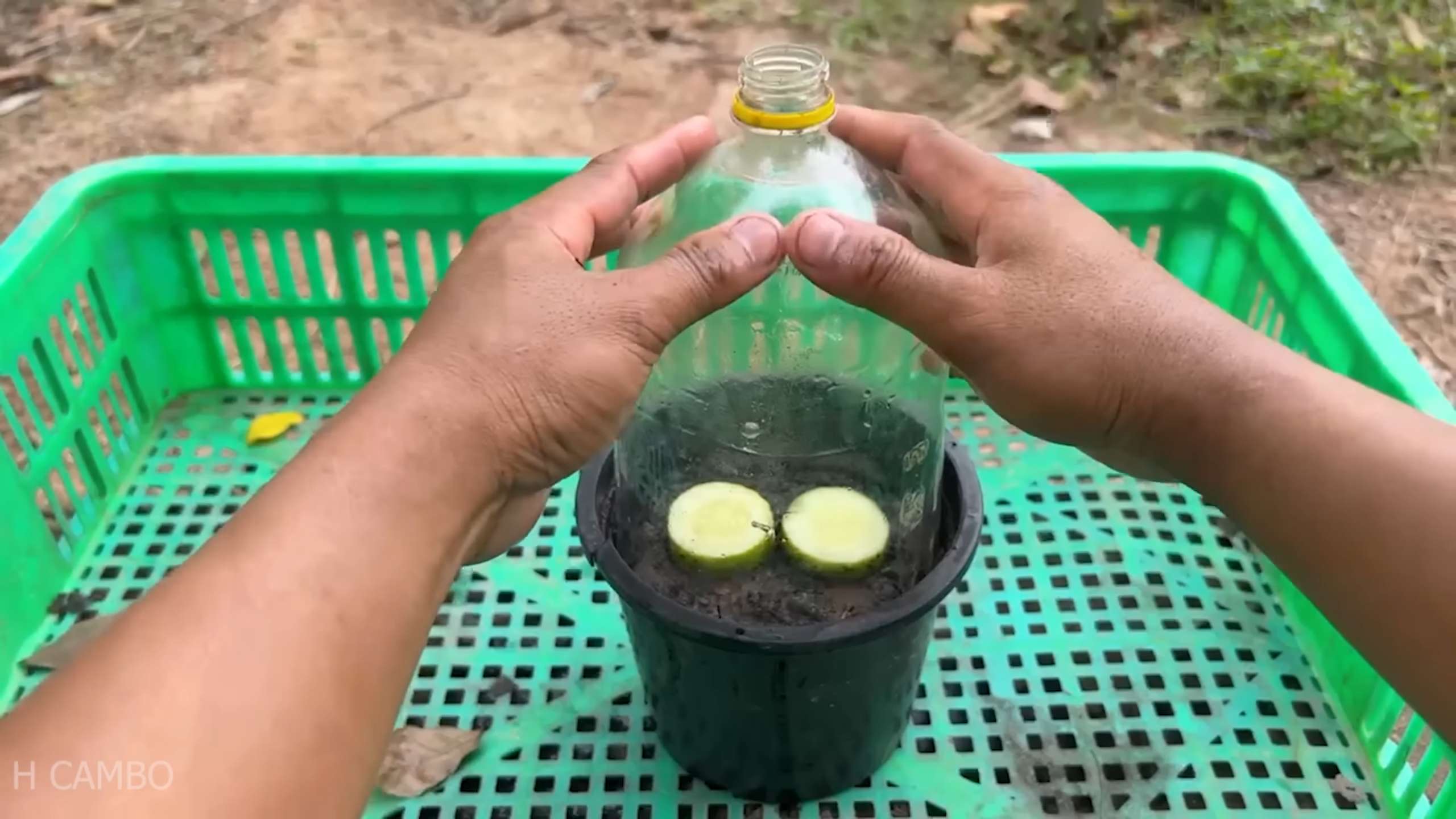
Conclusion
So, there you have it! Growing cucumbers in a small space isn’t just a pipe dream; it’s an achievable reality with a little ingenuity and the right techniques. We’ve explored how vertical gardening, container selection, and strategic pruning can transform even the tiniest balcony or patio into a thriving cucumber patch.
But why should you bother with this DIY approach? Because it’s empowering, rewarding, and frankly, delicious! Imagine stepping outside your door and harvesting fresh, crisp cucumbers whenever you need them. No more trips to the grocery store for subpar produce that’s traveled hundreds of miles. You’ll have complete control over the growing process, ensuring your cucumbers are free from harmful pesticides and bursting with flavor. Plus, there’s an undeniable satisfaction that comes from nurturing something from seed to harvest.
This method of growing cucumbers in small spaces is also incredibly versatile. Feel free to experiment with different cucumber varieties. Bush cucumbers are naturally compact and well-suited for containers, while vining varieties can be trained up trellises or even draped over balconies for a stunning visual display. Consider adding companion plants like marigolds or basil to deter pests and attract pollinators. You can also adjust the size of your containers and trellises to fit your specific space and aesthetic preferences.
Don’t be afraid to get creative! Try using repurposed materials like old ladders or pallets to create unique vertical gardens. Experiment with different soil mixes to find what works best for your climate and cucumber variety. And most importantly, don’t give up if you encounter challenges along the way. Gardening is a learning process, and every mistake is an opportunity to improve your skills.
We’ve armed you with the knowledge and inspiration to embark on your own small-space cucumber growing adventure. Now it’s time to put those tips into action! We are confident that you will be able to grow your own cucumbers in a small space.
We encourage you to try this DIY trick and share your experience with us. Post photos of your cucumber gardens on social media using #SmallSpaceCucumbers and tag us so we can see your amazing creations. Let’s build a community of urban gardeners who are passionate about growing their own food, no matter how limited their space may be. Your success story could inspire others to take the plunge and discover the joys of homegrown cucumbers.
Frequently Asked Questions (FAQ)
What are the best cucumber varieties for small spaces?
Choosing the right cucumber variety is crucial for success in small-space gardening. Bush cucumber varieties, like ‘Spacemaster,’ ‘Bush Champion,’ and ‘Patio Snacker,’ are naturally compact and well-suited for containers. They produce shorter vines and require less support than traditional vining cucumbers. Vining varieties, such as ‘Little Leaf’ or ‘Mini White,’ can also be grown in small spaces if they are trained up a trellis or other vertical support system. Look for varieties that are labeled as “bush,” “compact,” or “container-friendly.” Consider disease resistance as well, especially if you live in an area prone to cucumber-related diseases.
How much sunlight do cucumbers need?
Cucumbers are sun-loving plants and require at least 6-8 hours of direct sunlight per day to thrive. Insufficient sunlight can lead to stunted growth, reduced fruit production, and increased susceptibility to diseases. If you’re growing cucumbers indoors or in a partially shaded area, consider supplementing with grow lights to ensure they receive adequate light. Rotate your containers regularly to ensure all sides of the plant receive sunlight. Observe your plants closely and adjust their position as needed to maximize sun exposure.
What is the best type of soil for growing cucumbers in containers?
Cucumbers need well-draining, nutrient-rich soil to flourish. A good potting mix for cucumbers should be light and airy, allowing for proper root development and drainage. Avoid using garden soil in containers, as it can become compacted and restrict root growth. A mix of equal parts potting soil, compost, and perlite or vermiculite is ideal. Compost provides essential nutrients, while perlite or vermiculite improves drainage and aeration. You can also add a slow-release fertilizer to the soil mix to provide a steady supply of nutrients throughout the growing season.
How often should I water my cucumber plants?
Cucumbers are thirsty plants and require consistent watering, especially during hot weather. Water deeply whenever the top inch of soil feels dry to the touch. Avoid overwatering, as this can lead to root rot. Container-grown cucumbers tend to dry out more quickly than those grown in the ground, so check the soil moisture regularly. Mulching around the base of the plants can help retain moisture and reduce the need for frequent watering. Water early in the morning to allow the foliage to dry before nightfall, which can help prevent fungal diseases.
How do I support my cucumber vines in a small space?
Vertical gardening is essential for growing vining cucumbers in small spaces. Trellises, cages, and stakes are all effective ways to support cucumber vines. Choose a support system that is sturdy enough to handle the weight of the mature vines and fruits. Train the vines to climb the support structure by gently guiding them and tying them loosely with twine or plant ties. Prune away any side shoots or tendrils that are not actively climbing to encourage the plant to focus its energy on fruit production. You can also use hanging baskets or window boxes with trailing cucumber varieties for a unique and space-saving display.
How do I deal with pests and diseases on my cucumber plants?
Cucumbers are susceptible to various pests and diseases, including aphids, cucumber beetles, powdery mildew, and downy mildew. Regularly inspect your plants for signs of infestation or disease. Handpick pests or use insecticidal soap to control aphids and cucumber beetles. Improve air circulation around the plants by pruning away crowded foliage. Apply a fungicide to prevent or treat powdery mildew and downy mildew. Choose disease-resistant cucumber varieties to minimize the risk of these problems. Companion planting with marigolds or basil can also help deter pests.
When should I harvest my cucumbers?
Harvest cucumbers when they are young and tender, before the seeds become too large and the skin becomes tough. The ideal size for harvesting depends on the variety, but generally, cucumbers should be harvested when they are about 6-8 inches long. Check the seed packet or plant tag for specific harvesting instructions. Use a sharp knife or pruners to cut the cucumbers from the vine, leaving a short stem attached. Regular harvesting encourages the plant to produce more fruit. Overripe cucumbers can become bitter and seedy, so it’s important to harvest them at the right time.
Can I grow cucumbers indoors?
Yes, you can grow cucumbers indoors, but it requires some extra effort. You’ll need to provide adequate light, either through a sunny window or with grow lights. Choose a compact or bush variety that is well-suited for container growing. Hand-pollinate the flowers using a small paintbrush to transfer pollen from the male flowers to the female flowers. Maintain a consistent temperature and humidity level. Provide adequate ventilation to prevent fungal diseases. Growing cucumbers indoors can be a rewarding experience, allowing you to enjoy fresh cucumbers even during the off-season.


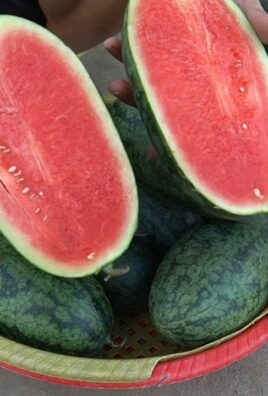
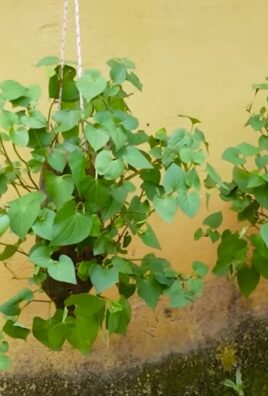
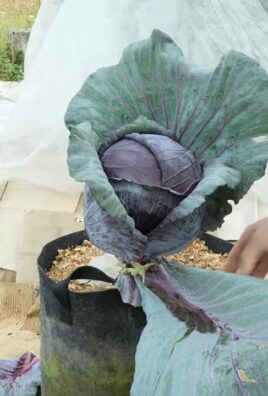
Leave a Comment